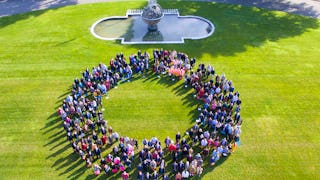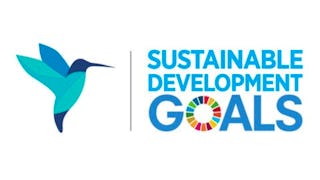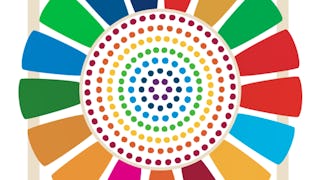In 2015, the UN launched the 17 Sustainable Development Goals (SDGs). Adopted by 193 member states, the goals represent an important international step in setting humanity on a trajectory towards sustainable development. Within this course, you will get a historical overview of how sustainability has been understood, as well as a thorough introduction to the SDGs – what they are, how progress can be measured, and how the SDGs are relevant for the management of the global systems supporting humanity. The course will examine how various societal actors are responding to and implementing the SDGs.

Gain next-level skills with Coursera Plus for $199 (regularly $399). Save now.

The Sustainable Development Goals – A global, transdisciplinary vision for the future

Instructor: Katherine Richardson
118,159 already enrolled
Included with
(4,906 reviews)
Skills you'll gain
Details to know

Add to your LinkedIn profile
3 assignments
See how employees at top companies are mastering in-demand skills

There are 3 modules in this course
In this first module, you will be introduced to the concept of sustainability, its roots, and history of development. The framework of the SDGs is outlined in more detail, and we will discuss what sets them apart from previous international agreements, how we can measure progress and how the goals are interconnected. We will touch upon food systems, as an example of how the SDGs are relevant for - and can be implemented in - global systems through international cooperation.
What's included
3 videos3 readings1 assignment1 discussion prompt
In this second module, we will have a more detailed look at the scientific evidence that human activities are influencing the Earth at the planetary level. You will be introduced to the concepts of Anthropocene and Planetary Boundaries. The biosphere (all living organisms or "biodiversity") is arguably just as - or more - important than climate for establishing the environmental conditions we enjoy on Earth, but receives much less attention. This module, therefore, will focus on monitoring and managing human impacts on climate and biodiversity as well as the potential consequences of failing to meet the goals of the SDGs relating to climate and biodiversity.
What's included
3 videos2 readings1 assignment1 discussion prompt
Where the last module focused on the impact of humanity's activities on the bio-physical components of the Earth system, this final section first focuses on the condition of humans, themselves, and the SDGs focusing on the improvement of that condition. You will be introduced to the concept of Doughnut Economics, which builds on the Planetary Boundaries framework. Finally, this module examines current status for implementation and provides examples of how different actors are engaging in global efforts to achieve the goals.
What's included
3 videos4 readings1 assignment2 discussion prompts
Instructor

Offered by
Explore more from Governance and Society
 Status: Preview
Status: PreviewYonsei University
 Status: Preview
Status: Preview Status: Preview
Status: PreviewErasmus University Rotterdam
 Status: Preview
Status: PreviewDuke University
Why people choose Coursera for their career




Learner reviews
4,906 reviews
- 5 stars
81.04%
- 4 stars
16.38%
- 3 stars
2.13%
- 2 stars
0.18%
- 1 star
0.24%
Showing 3 of 4906
Reviewed on Jul 18, 2020
Thank you for offering this course (The Sustainable Development Goals-A global transdisciplinary vision for the future). I have passed it but I am not sure how can i get the certificate at this stage.
Reviewed on Sep 13, 2020
The Course really helped me understand the various aspects of Sustainable development better and how different factors or societal actors can come together and help work on the goals.
Reviewed on Jun 12, 2019
I learnt a whole lot from this course. I gained new knowledge, learned new terms that would forge my future studies. I know more about the SDGs than I did before this course. Thank you for this!
Frequently asked questions
To access the course materials, assignments and to earn a Certificate, you will need to purchase the Certificate experience when you enroll in a course. You can try a Free Trial instead, or apply for Financial Aid. The course may offer 'Full Course, No Certificate' instead. This option lets you see all course materials, submit required assessments, and get a final grade. This also means that you will not be able to purchase a Certificate experience.
When you purchase a Certificate you get access to all course materials, including graded assignments. Upon completing the course, your electronic Certificate will be added to your Accomplishments page - from there, you can print your Certificate or add it to your LinkedIn profile.
Yes. In select learning programs, you can apply for financial aid or a scholarship if you can’t afford the enrollment fee. If fin aid or scholarship is available for your learning program selection, you’ll find a link to apply on the description page.
More questions
Financial aid available,





